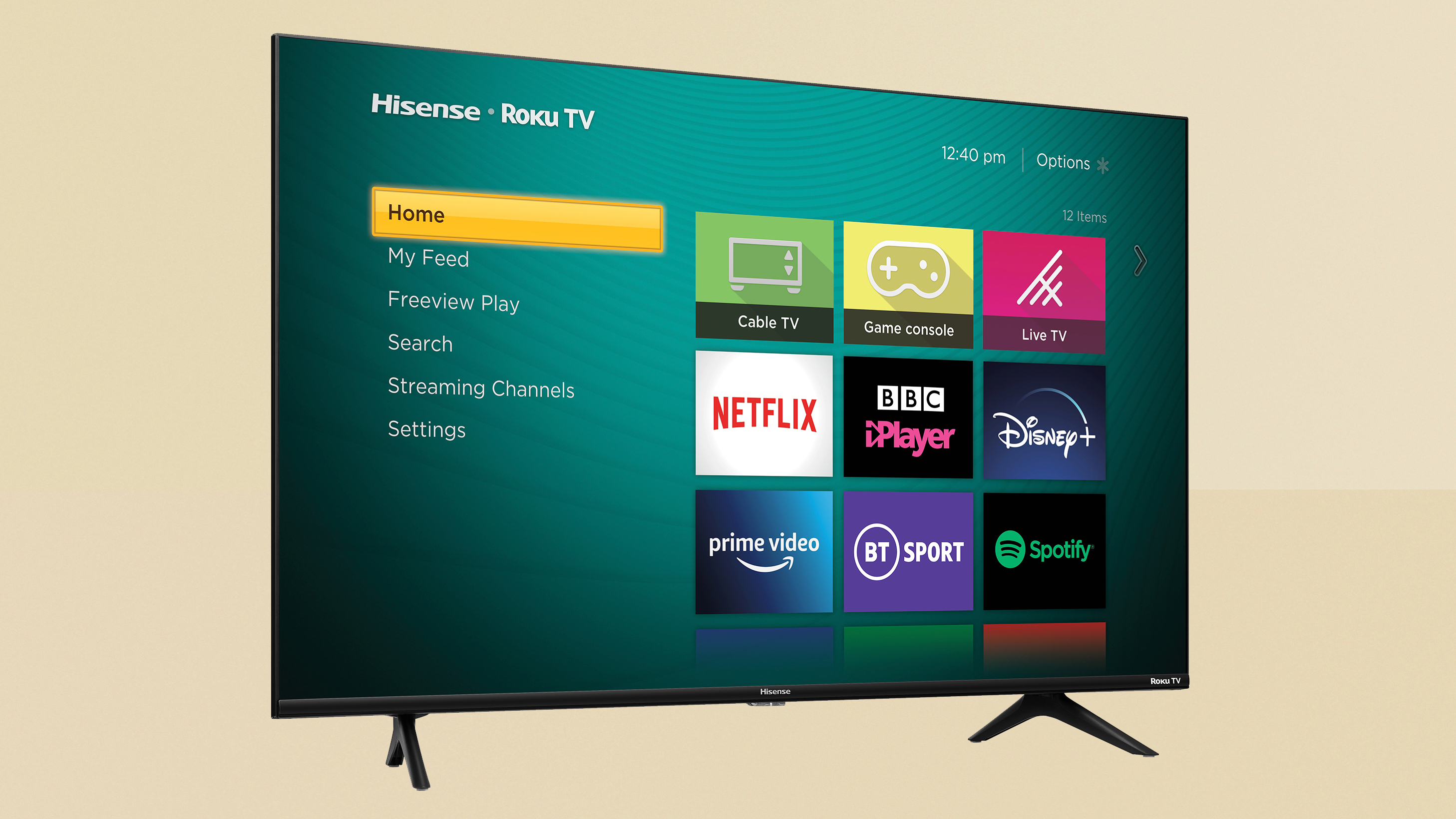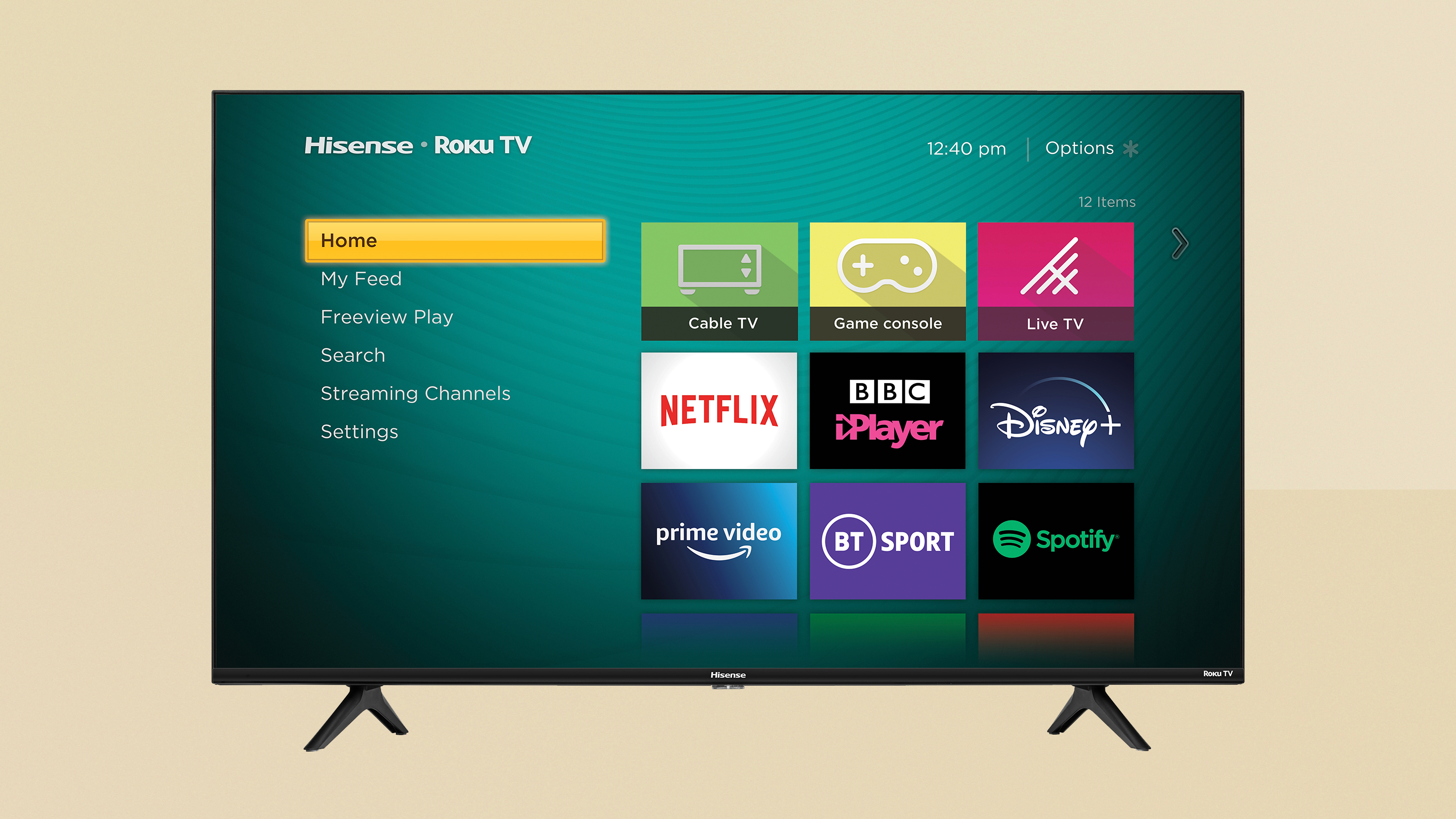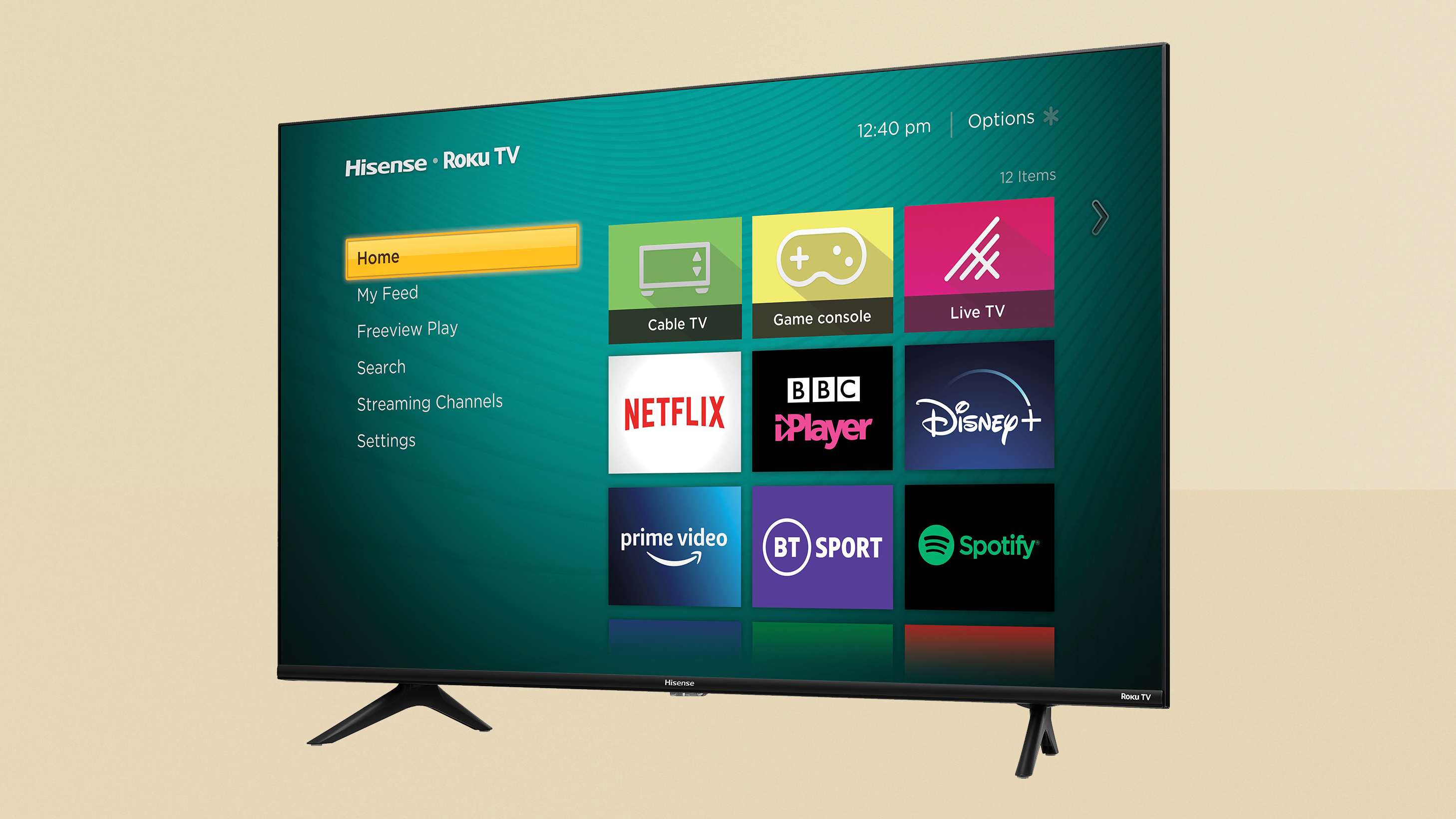Hisense A7200G (R50A7200G) review: a great cheap 4K TV with top-tier smart TV features
The Hisense A7200G is astoundingly cheap, but doesn't feel it – from the Roku TV smart platform to the 4K performance

Quite a lot of TV for not that much money - that’ll be the Hisense R50A7200GTUK. There are more refined, better-balanced TVs around, sure - but none of them are anything like as affordable as this.
-
+
A lot of well-specified TV for the money
-
+
Excellent Roku TV interface
-
+
Composed, coherent images from best-quality sources
-
-
Upscaled from SD is weak
-
-
Sounds quite uninvolving
-
-
Quite a deep chassis
Why you can trust T3

The Hisense A7200G is classic Hisense. What the company does isn’t complicated, but that doesn’t mean it’s easy. The Chinese brand has been redefining our performance-per-pound expectations where televisions are concerned for quite a while now, and when it gets it right (as it does quite often) it’s capable of making other TV brands’ products look wildly overpriced. It absolutely makes some of the best TVs under £500 and best TVs under £1000, despite extremely hot competition.
And if the Hisense A7200G range is anything to go by, it’s business as usual for 2021. The formula hasn’t changed in the slightest – on-paper specification, which includes 4K HDR and Roku's smart TV interface, seems to punch well above the asking price.
We're reviewing the 50-inch version here, specifically known as the R50A7200GTUK, so does it have what it takes to steal sales away from the more expensive alternatives from the more, well, high-profile brands?
Please note this is a UK TV only – sadly, there's no direct equivalent in the US (at least partly because TCL makes all Roku TVs in the US, and Hisense makes all Roku TVs in the UK).
Hisense A7200G review: Price & features
The Hisense A7200G is on sale now. It’s the 50-inch we’re testing here, and it’s yours for no more than £349. It’s available in three other screen sizes: 43-inch (£299), 55-inch (£399) and a 65-inch variant that isn’t, as yet, available and doesn’t, as yet, have a price confirmed. We’re confident it’s not going to be wildly expensive, though.
Anyone who’s been so much as window-shopping for a new 4K HDR TV will know these prices to be (and this is putting it politely) aggressive. And a glance at the R50A7200GTUK’s feature-set only makes that £349 price-tag look even more combative.
Here’s a 50-inch 4K LCD TV with full-array LED backlighting (an arrangement Hisense calls ‘DLED’). It’s HDR-enabled, but despite Hisense’s determination to offer mainstream specification at entry-level prices, there are limits. So the A7200 covers only HLG and HDR10 HDR standards – there’s no Dolby Vision or HDR10+ here, which is a bit of a shame, because the limited brightness of budget TVs means they really benefit from Dolby Vision in particular.
In terms of inputs and outputs, too, there’s plenty going on. The A7200 has three HDMI 2.0 sockets – all three cover 4K at 60Hz, and one is ARC-enabled for a soundbar/sound system. They’re joined by a binding post for the integrated terrestrial TV tuner, an ethernet port, composite video inputs, a USB 2.0 input, plus digital optical and 3.5mm analogue outputs. There's Wi-Fi for online connectivity, naturally,
Sound is provided by two downward-firing 'racetrack' (meaning: oval) drivers, each driven by eight watts of power. Hisense has incorporated DTS Studio Sound enhancement technology here, which basically means a degree of DTS-approved adjustment where EQs and bass enhancement are concerned. Certainly we’ve seen (and heard) TVs with less thoroughly specified audio circuitry.
Using Roku TV as a smart interface is a little bit of a coup for Hisense. Roku is gaining the sort of credibility in Europe to match its profile in America, and the Roku interface gives access to Freeview Play, Disney+, BT Sport, Netflix and a whole stack of other on-demand and catch-up streaming services. 2021 will see plenty of more expensive TVs than this with less comprehensive (and less logical) smart TV interfaces than this.
Picture quality is taken care of by Hisense’s most recent quad-core processor. The A7200 is hardly the default choice as the new best gaming TV – it goes without a single HDMI 2.1 feature – but input lag of less than 40ms means users of legacy consoles shouldn't find too much to take issue with here.

Hisense A7200G review: Picture quality
Set-up is straightforward – once you’ve located the set-up menus, anyway. They’re clear and uncomplicated, which isn't always the case. It’s possible to tinker around the edges of the way the Hisense does its thing, but in truth there’s not a whole lot of meaningful changes to be made to the way the A7200G delivers images or sound. The six presets for ‘picture mode’, for example, basically alter colour temperature a little. Being offered the option to set ‘dialogue clarity’ to ‘low’ is quite amusing, though, admittedly. It'd be a fun challenge to watch a Christopher Nolan movie with that setting, if nothing else.
Once you have colour balance, contrast and brightness at a level you’re happy with, it’s time to let the Hisense do its thing. And for the majority of the time, ‘its thing’ is generally quite poised and never less than watchable.
With some HDR-assisted content delivered by a 4K Blu-ray player, the Hisense really makes the most of its specification. Colours are natural and convincing, and they’re decently wide-ranging – certainly there’s plenty of variation in skin-tones to enjoy here.
Black tones are decently deep and avoid crushing well – if there’s detail in the darkest scenes, the Hisense will at the very least allude to it. And it manages to keep white tones clean and detailed at the same time, so despite a fairly humdrum peak brightness, the A7200G’s contrasts are convincing.
Picture noise is low, movement is generally (although not always) well controlled, and overall detail levels are pretty high. Textures are described well, and even quite intricate patterns are handled with confidence. Basically, if you give the Hisense the best stuff to work with, it won’t let you down.
Step down in quality just a little with a 4K stream via Netflix and the fundamental story is the same. Most of the good stuff – detail levels, absence of noise, facility with edge definition and the subtleties of texture – is carried over intact. Even the drop-off in motion control is mild.
So far, so very agreeable indeed. And as an upscaler, at least of Full HD 1080p content, the Hisense is no slouch either. Edges lose a little positivity, there’s a general softening of the overall images and detail levels take a turn for the worse too, but these compromises are in line with those demanded by much more expensive televisions doing the same work. And the A7200G’s control of tight, complicated patterns in content like this is, if anything, even more impressive than before. Movement can make the Hisense betray how hard it’s working, but it doesn’t render the images unwatchable.
Obviously the A7200G isn’t a miracle-worker. The way off-air broadcasts look is, as with every other source, entirely dependent on the quality of the incoming material. Some live sport, for example, looks pretty decent – the big, uniform area of colour that’s the playing field can get a bit noisy and restless, and the unpredictable motion can catch the Hisense out, but overall it’s pretty composed.
A vintage daytime TV broadcast of some 4:3 material from the ’80s, by contrast, manages to be both soft and edgy at the same time, is short of detail and shorter still where motion control is concerned.
Hisense A7200G review: Sound quality
A two-speaker array and a total of 16 watts of power isn’t a recipe for any home cinema audio fireworks, but the A7200G never sounds unduly wheezy or stressed. Instead, you get a pretty tranquil (or ‘flat’ if you’re being uncharitable) sonic experience, one that’s far from the last word in detail or insight but doesn’t get hard or jagged even if you want to listen loud.
The six EQ presets are pretty mild in their effect – ‘big bass’, in particular, is so misleading it’s borderline actionable – but there’s none of the coarseness we’ve previously associated with the sound of Hisense TVs. Still, picking up a budget option from our list of the the best soundbars would make a world of difference.

Hisense A7200G review: Design & usability
If you’re hoping to find a visual or tactile indication of how Hisense has delivered such a big, well-specified TV for so little money, they’re few and far between where design is concerned.
Viewed from the head-on (which, let’s be honest, is how you’ll look at it for the vast majority of the time), the Hisense is anonymous in an entirely positive way. The top, left and right bezels are very slim and smooth, while the broader strip along the bottom (which carries both ‘Hisense’ and ‘Roku TV’ logos) is equally well integrated.
The two simple ‘boomerang’ feet on which the Hisense stands are similarly pragmatic. Each is held in place by a couple of screws, each is nothing much to look at or touch – but each does what it needs to do without fuss and without drawing attention to themselves.
An all-in weight of seven kilos means the R50A7200GTUK is easy enough to wall-mount. But a depth of 85mm (to accompany height of 564mm and width of 969mm) means it will protrude an unfashionable distance from the wall it’s mounted on. If anything makes the A7200G look like a budget-conscious option, it’s the unglamorous depth of its cabinet.
But while there’s nothing luxurious about the way the plastics used in the Hisense’s construction, neither is there anything about the way it’s all put together that sets alarm bells ringing. Build quality is reassuring here.
Control is available via the remote control handset or the Roku mobile app. The remote control doesn’t feel all that expensive (hardly a surprise) but it’s not the ergonomic disaster it might have been. It’s quite sensibly laid out, and direct buttons for Netflix and Freeview Play are very welcome. They’re certainly more useful than the direct buttons for Rakuten TV or Spotify, anyhow.
The Roku app (for iOS and Android) is very usable too. It’s clear, logical and stable (the Holy Trinity for any control app, really), and it makes searching for content, casting from a mobile device or using some rudimentary voice control completely straightforward.
No matter the control method you prefer, you’ll be controlling a smart TV interface that’s a sight more pleasant than any number of alternative brands can offer. The Roku TV set-up is big, bold and utterly straightforward. If you can’t get access to the content you want, really quickly and easily, well… we reckon that’s much more about you than about this TV’s operating system.
Hisense A7200G review: Verdict
Everything’s relative, of course – and as long as you keep the price uppermost in your mind, there’s lots to like about the Hisense R50A7200GTUK. Give it a fighting chance with the content you feed in and it’s capable of looking like a more expensive TV, and the user experience – thank you, Roku! – is more pleasant than many a more expensive TV can offer. As long as you’re not expecting miracles, the Hisense is a genuinely strong budget-oriented option.
Sign up to the T3 newsletter for smarter living straight to your inbox
Get all the latest news, reviews, deals and buying guides on gorgeous tech, home and active products from the T3 experts
Simon Lucas is a freelance technology journalist and consultant, with particular emphasis on the audio/video aspects of home entertainment. Before embracing the carefree life of the freelancer, he was editor of What Hi-Fi? magazine and website – since then, he's written for titles such as Wired, Metro, the Guardian and Stuff, among many others. Should he find himself with a spare moment, Simon likes nothing more than publishing and then quickly deleting tweets about the state of the nation (in general), the state of Aston Villa (in particular) and the state of his partner's cat.
-
 Warning: Ciele’s refreshed Elite Collection may cause excessive garment envy on race day
Warning: Ciele’s refreshed Elite Collection may cause excessive garment envy on race dayFlex on your run crew with Ciele’s latest drop
By Matt Kollat Published
-
 Smeg adds a touch of navy sophistication to its iconic breakfast set
Smeg adds a touch of navy sophistication to its iconic breakfast setIt's a minimalist's dream
By Lizzie Wilmot Published
-
 My most anticipated Netflix movie of the year gets a wild new trailer
My most anticipated Netflix movie of the year gets a wild new trailerHavoc looks pretty unbelievable
By Max Freeman-Mills Published